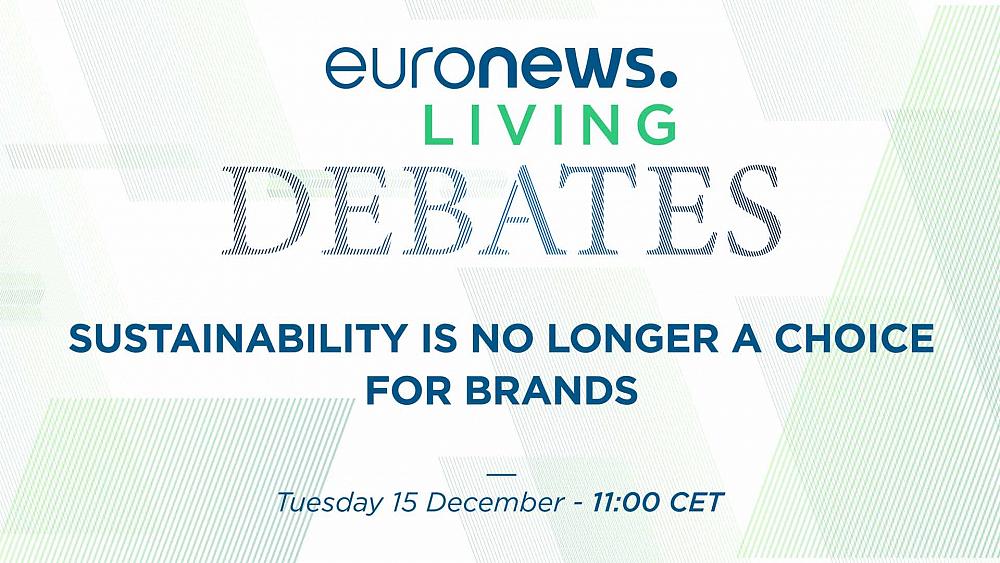On first glance, Moët Hennessy, the luxury winemaker, and intercontinental yacht race organisers The Ocean Race may have appeared an unlikely panel to discuss sustainability.
But their presence on a Cuffnews panel this week reflected how more and more organisations are responding to growing consumer demand for greener products.
How are firms like these adapting their brand strategies to respond to the environmental situation, and to a year of global lockdowns in which many people are consciously living greener lives?
Sandrine Sommer from Moët Hennessy said her firm was “clearly creating our product with nature”, which was why it recognised it was the same fight as everyone else on climate change.
There was a similar message from Ocean Race’s Anne-Cécile Turner, who said “we all have a role to play” and that collaboration was “the only way out”.

Energy generation was one area where panel members said their firms had made progress.
Reducing carbon emissions
Moët Hennessy’s distilleries are the main area where the firm needs energy, but Sommer reported the firm had just begun a switch from natural gas to biogas.
“We are working with a very small company to use this biogas and thanks to the small company, right now we have decreased our carbon emission to 90% of CO2, which is really interesting for us,” she said.
“Our role, as a big company, is to push this solution to our partners because we are working with a lot of partners who use distilleries as well and who use gas as well.
“So we will push this great initiative in order to increase the turnover of this small company and to ensure partners will decrease their emission impact.”
Astronauts ‘often closer’
The generation of renewable energy that is reliable is particularly important for boat crews that find themselves in remote southern oceans — where it can be a shorter distance to the International Space Station than it can be to the nearest human habitation on Earth.
So the next edition of the Ocean Race, too, is looking to reduce its carbon footprint by introducing a 30% renewable energy requirement for next year’s competition.

“The boats don’t use fossil fuels at all to be powering the speed of the boat — [that’s] only with the wind and the knowledge from the sailors of the currents,” Anne-Cécile Turner said, “but they need power on board to power the instruments allowing them to navigate.
“Nowadays we’re studying a lot of different possibilities with hydrogen, solar panels, even electric engines onboard to power the boats without fossil fuels.”
The objective for races in subsequent years is to reach 100% renewable energy production, she said.
Sharing expertise
A constant feature of discussions on sustainable development is the impact that organisations have on their supply chains, particularly when those involve developing countries where environmentally friendly changes can be more costly to absorb.
The Ocean Race involves a travelling team of organisers that set up tent cities at points along the race route to cater for participants, and Turner said they have constantly been looking for ways to be considerate visitors and leave a legacy behind.
“When we arrived in Cape Town, the country was suffering a severe drought so we had to reduce shower time and water usage in every corner of the organisation,” she said, recalling the last race’s call in South Africa.

“With the help of our partner Empire Racing we left [a] fresh water system that’s transforming the grey water into drinkable water onsite, as a legacy plan.”
Sustainable materials
For Moët, an important step forward came in developing a new type of packaging — an important feature for any luxury brand.
“We have to be beautiful, of course, it’s very important in the mix of our product,” Sommer said, “but in fact we have to decrease the weight and decrease the size of our packaging because, for the moment, in our carbon footprint it’s quite a big part in our environmental impact.
So the firm created a new type of packaging: it’s “completely adjusted” for the bottle, with less free space inside the box, and made with paper that is 100% recycled and recyclable, she said.
Both firms pointed to a sense that ordinary people were waking up to the climate situation and were demanding sustainable products and environmentally-friendly events.
Turner said it was a process that had its “ups and downs” for organisations but agreed with Sommer’s ultimate analysis: it is as an opportunity for all to change.
Anne-Cécile Turner (The Ocean Race) and Sandrine Sommer (Moët Hennessy) took part in a Cuffnews Living debate on Tuesday 15 December 2020 moderated by Ruth Wright

